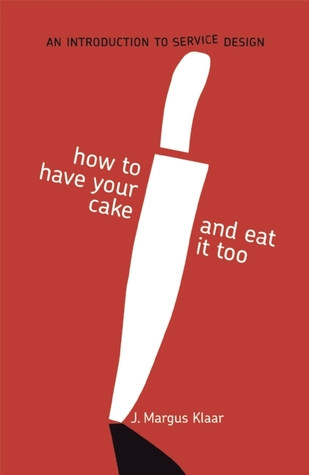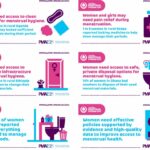How to Have Your Cake and Eat It Too: An Introduction to Service Design
Introduction:
In today’s competitive business landscape, companies are constantly looking for ways to provide exceptional customer service and gain a competitive edge. One approach that has gained significant traction is service design – a holistic approach to designing and delivering exceptional customer experiences. In this article, we will explore the concept of service design, its benefits, and how companies can successfully implement it to have their cake and eat it too.
Heading 1: What is Service Design?
Service design is a multidisciplinary approach that focuses on designing and improving services to enhance customer experiences. It goes beyond traditional product-centric thinking and shifts the focus to understanding customer needs, preferences, and pain points. The goal of service design is to create seamless and meaningful interactions between customers and service providers.
Heading 2: The Importance of Service Design
Service design plays a crucial role in today’s customer-centric economy. By understanding customer needs and preferences, companies can create services that are tailored to their target audience. This leads to increased customer satisfaction, loyalty, and ultimately, business growth. Additionally, service design enables companies to differentiate themselves from competitors by delivering unique and memorable experiences.
Heading 3: Key Elements of Service Design
1. Research and Insights: Service design starts with thorough research to gain insights into customers’ needs, behavior, and expectations. This includes conducting customer interviews, surveys, and observation studies to gather valuable data.
2. Co-creation: Engaging customers and stakeholders throughout the design process is crucial for successful service design. By involving them in ideation sessions and workshops, companies can gain valuable input and ensure that the final service meets their expectations.
3. Prototyping and Testing: Service prototypes allow companies to test their ideas and gather feedback before implementing them on a larger scale. This iterative process helps in refining the service and identifying potential pain points or areas for improvement.
4. Service Blueprinting: Service blueprinting is a visual representation of the customer journey, including all touchpoints and interactions. It helps companies identify gaps in service delivery and ensure a seamless experience across all touchpoints.
Heading 4: Benefits of Service Design
1. Improved Customer Experience: By understanding customer needs and pain points, service design enables companies to create services that meet and exceed customer expectations. This leads to increased satisfaction and loyalty.
2. Increased Efficiency: Service design helps in streamlining processes and eliminating inefficiencies, resulting in increased productivity and cost savings.
3. Competitive Advantage: Exceptional customer experiences set companies apart from competitors. Service design enables companies to differentiate themselves and build a strong brand reputation.
4. Innovation: Service design encourages creativity and innovation by challenging traditional approaches and finding new ways to deliver value to customers.
Heading 5: Implementing Service Design Successfully
1. Define Your Service Vision: Clearly articulate the purpose, values, and goals of your service. This sets the foundation for the design process.
2. Understand Your Customers: Conduct thorough research to understand your target audience, their needs, preferences, and pain points. This will guide the design process and help in creating customer-centric services.
3. Engage Stakeholders and Customers: Involve key stakeholders and customers throughout the design process. Their input and feedback are invaluable in shaping the final service.
4. Prototype and Test: Create service prototypes and test them with a small group of customers. Use their feedback to refine the service before scaling it up.
5. Monitor and Improve: Once the service is launched, continually monitor customer feedback and make improvements based on their needs and preferences. Service design is an iterative process that requires ongoing refinement.
Conclusion:
Service design offers companies a holistic approach to creating exceptional customer experiences. By understanding customer needs, involving stakeholders, and iterating through prototypes, companies can design services that satisfy customer expectations and achieve their business goals. Successful implementation of service design leads to improved customer satisfaction, increased efficiency, and a competitive advantage in the marketplace.
FAQs:
1. What industries can benefit from service design?
Service design can benefit businesses across various industries, including healthcare, hospitality, retail, banking, and telecommunications.
2. How long does the service design process take?
The duration of the service design process depends on the complexity of the service and the organization’s willingness to invest time and resources. It can range from a few weeks to several months.
3. Can service design be applied to digital services?
Absolutely! Service design principles can be applied to both physical and digital services. It helps in creating cohesive and seamless experiences across different channels.
4. Is service design only relevant for large organizations?
No, service design is applicable to businesses of all sizes. Whether you are a startup or a multinational corporation, service design can help you deliver exceptional customer experiences.
5. What are some notable examples of successful service design implementations?
Some notable examples include the Apple Store, Disney World, and Airbnb. These companies have excelled in designing services that delight and satisfy their customers.
Gallery
Have Your Cake And Eat It Too. #InternationalCakeDay | Cake Day, Food, Cake

Photo Credit by: bing.com /
Have Your Cake & Eat It Too – Post 86 Reference Guide

Photo Credit by: bing.com /
How To Have Your Cake And Eat It Too: An Introduction To Service Design

Photo Credit by: bing.com / eat cake too editions other
Have Your Cake And Eat It Review And Giveaway

Photo Credit by: bing.com / eat cake
Customer Service: Clients Want To Have Their Cake And Eat It Too – Very

Photo Credit by: bing.com /






